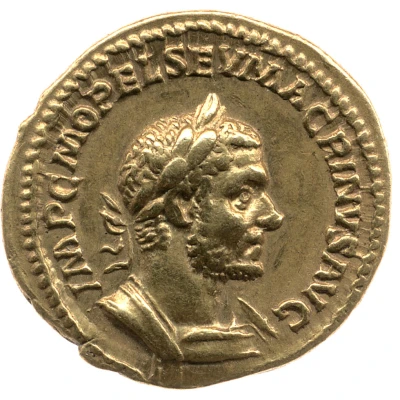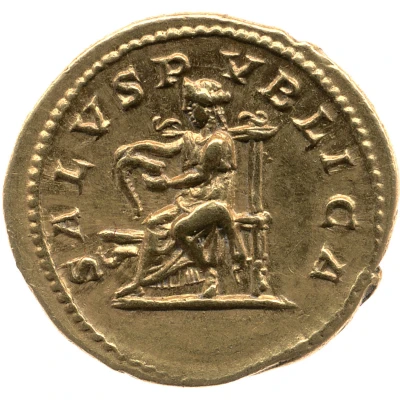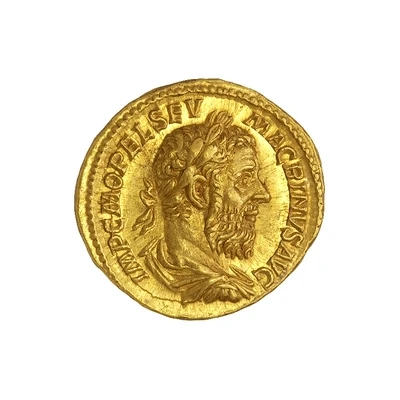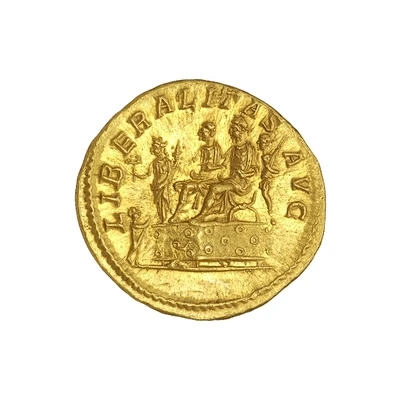


© Trustees of the British Museum
Aureus - Macrinus SALVS PVBLICA; Salus
| Gold | 6.9 g | 21 mm |
| Issuer | Rome › Roman Empire (27 BC - 395 AD) |
|---|---|
| Emperor | Macrinus (Marcus Opellius Macrinus) (217-218) |
| Type | Standard circulation coin |
| Years | 217-218 |
| Value | Aureus (25⁄2) |
| Currency | Antoninianus, Reform of Caracalla (AD 215 – 301) |
| Composition | Gold |
| Weight | 6.9 g |
| Diameter | 21 mm |
| Shape | Round (irregular) |
| Technique | Hammered |
| Demonetized | Yes |
| Updated | 2024-10-05 |
| Numista | N#275098 |
|---|---|
| Rarity index | 100% |
Reverse
Salus, draped, seated left on throne with high back, feeding out of patera in left hand snake coiled round altar and placing right hand on head of snake.
Script: Latin
Lettering: SALVS PVBLICA
Translation:
Salus Publica.
Public health.
Comment
Mass varies: 6.47–7.31 g;Example of this type:
Trustees of the British Museum
Source:
Online Coins of the Roman Empire (OCRE)
Interesting fact
The Aureus coin was used as a means of payment for high-value transactions, and it was also used as a symbol of wealth and power. In fact, the Aureus was the highest denomination coin in the Roman Empire and was only used by the wealthy elite. It was made of gold, which was a valuable and coveted metal at the time, and it was adorned with intricate designs and symbols that represented the Roman Empire and its rulers. The Aureus coin was truly a status symbol, and it was a sign of great wealth and influence to possess one.

